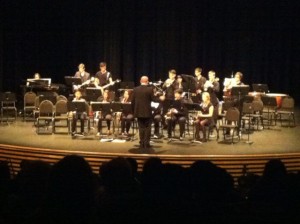Politics
Other People’s Moneyitis
Other People’s Moneyitis (OPM) is the syndrome commonly noted where those in charge of the public purse, such as governments who claim to be fiscally prudent, often seem to make decisions which do not appear to be supported by rational business arguments.
We see the symptoms of this syndrome, for example, when governments express concerns about spending, but then increase salaries for political staffers and themselves or run multi-million self-promoting advertising campaigns.
OPM is one of the few explanations which seems to make sense in trying to come to terms with the provincial government’s position on bargaining in the current labour dispute with the BCTF. A dispute which is threatening to dramatically derail education for approximately 559,000 students this fall.
Why?
As those following the intricacies of public education in British Columbia will know, the BC Supreme Court found that the government acted unconstitutionally in 2002 when it stripped provisions from the teachers’ collective agreement around class size and composition.
This original court case was not appealed which means the government accepted its wrong-doing and accepted class size and composition as working conditions to be negotiated with the union.
The government was given a year to fashion a remedy, but failed to do so successfully and Justice Griffin subsequently ruled that they had negotiated in bad faith, that the remedy was insufficient, and that they had to pay the BCTF $2 million in fines. This is the judgement which the government is now appealing and which will be heard in mid-October 2014.
What does it mean if the government wins the appeal and what does it mean if the government does not win the appeal?
If the government wins the appeal, it means that they acted unconstitutionally in 2002 and that class size and composition are working conditions to be negotiated. These facts from the original court case do not change.
With a government win, the BCTF may appeal to the Supreme Court of Canada and I understand there would be a significant possibility that the highest court would agree to hear the case in this situation.
If the case does go to the Supreme Court of Canada and if it is found to be in favour of the BCTF, that could have a huge cost implication not only for this one collective agreement but for any collective agreement with any public sector union and for all time. While the courts would never say how much money government is required to spend, a loss by the government — if they let it get this far — would have tremendous cost implications well beyond anything required to settle the current dispute.
On the other hand, if the government were to win at the Supreme Court of Canada, it would still mean they acted unconstitutionally in 2002 and that class size and composition are working conditions to be negotiated because the Supreme Court would not be examining the original court case. All those legal costs and all the hidden costs of time and resources will have been spent to end up back at the position in which the government started. To refuse to see that even a win at the Supreme Court of Canada may still lead to the government of British Columbia investing a significant amount of money in the public education system is a level of obstinacy and arrogance that can only be afforded with OPM.
Let’s go back to the appeal of the Griffin decision this October.
If the government loses, they can make application to the Supreme Court of Canada, but it’s my understanding that there may be less interest from the higher court in hearing this case under these circumstances. That means, if the court of appeal expedites its ruling and if the Supreme Court were to turn down the request to hear the case, the end of the legal process would in fact be a lot sooner than anticipated.
With an appeal loss, the government’s risky gamble will have been for nought. The original finding that they acted unconstitutionally in 2002 and that class size and composition are working conditions to be negotiated would stand. They would have to pay $2 million to the BCTF. The finding of bad faith bargaining would stand as would the finding that the remedy, which the government fashioned over the course of the year they had, was insufficient.
In addition to funding whatever number or formula or fund is established to deal with class size and composition, an appeal loss would also mean that every instance where a classroom did not comply with the provisions of class size and class composition as per the 2002 collective agreement would form the basis for a grievance.
Think about that for a moment.
Every class throughout the province from 2002 to 2014 which did not comply with the provisions of the collective agreement which existed prior to 2002 would be subject to a grievance with no further legal processes available for the government to pursue.
Every non-compliant classroom. For each of twelve years. Throughout the province.
Think about the cost implications not only in terms of the actual compensation that would be paid out in the end, but of the legal fees involved and the demand on resources. Instead of promoting and providing education, the Ministry of Education, school districts, the union, the local branches, and teachers, would be tied up in an endless series of grievances.
Any private entity, faced with the potential for such a future calamity, would be zealous in trying to extricate itself. In my estimation, it’s only the false confidence of OPM which prevents the government from doing so now.
That’s why I believe a negotiated settlement prior to the appeal being heard is actually one which serves the government interests the best and which would actually be much more mindful of taxpayers’ money. It would be the smartest business move and evidence of fiscal prudence as well as visionary leadership.
The government is standing on quicksand when it comes to the labour dispute with BC’s teachers although they are acting as if they’re secure in their bunker.
However, if they don’t pursue an out-of-court settlement now (a negotiated settlement which would enable school to start on September 2 as scheduled), if they don’t consider the abyss into which they are staring, when they fall, they will drag students, families, and one of the world’s best public education systems down with them.
From Job Action To Job Action To … ?
When I chose to run as a candidate in the 2011 municipal elections, the K-12 public education system in British Columbia was embroiled in job action.
Almost three years later, the public education system in British Columbia is once again contending with a job action which many are calling the worst ever for the sheer rancour of the debate, the barbed rhetoric which abounds, and the crumbling relationships.
In other words, my entire term as a Trustee on the West Vancouver Board of Education has been characterized by the lurch from one job action to another.
While bargaining has chewed away at my time as a Trustee, it’s insatiable appetite has also served as an obstacle to discussions and innovations on a number of educational topics.
Why?
Because if you’re consistently caught up in trying to clean up the mess your guests have made with the appetizers, you’ll never have the chance to sit down with your company to enjoy the main course.
If our focus is concentrated on bargaining issues, what are we not talking about? Here’s a short-list of “big picture” items which I feel are overshadowed by the labour situation whether at a local level or provincially (in alphabetical order):
Accountability
- which Ministry reports are essential and which ones aren’t?
- is there a way to simplify school district financial reporting to ensure better utilization of staff time and resources without sacrificing the integrity and thoroughness of the information required?
- aside from the issue of underfunding, is it time to review the current funding formula?
Assessment (I know much has been done in this area and some school districts have already begun experimenting with different approaches, but I’m afraid that work has been disrupted and the information won’t be available for sharing as best practices with others.)
- what should report cards look like at each level in the K-12 system?
- how do we continue to move forward on implementing models of formative assessment?
- is there a different way to organize credits at the high school level to enable a more flexible route to graduation rather than one based strictly on work in school or on a progression through grade levels?
Age Groupings
- is grouping students according to their age still the desired approach to education?
- how do we balance the advantages of early learning with the fact that for some students a later start into a formal school environment may be more desirable?
- do all students require a full five years of secondary education or should there be a fast-track option for some learners?
Calendar (some districts are already working with different calendars)
- do we have to start school in September and stop in June with the traditional breaks at the end of each calendar year, for spring break, and so on?
- are balanced calendar models more successful for students and their families?
- what are the logistical barriers to changing the calendar within a district? That is, does it work well to have one or more schools on a different calendar or does it work better to change all at once?
Community Links
- how do we break through the walls between our communities and our schools to improve and increase relevancy and connections?
- what sort of partnerships can we build with our community without compromising the integrity of our public education system?
- how do we draw on the expertise and skills of our community members to further enhance and support school learning and the work of our educators?
These are some topics I yearn to delve into along with other issues such as the new curriculum, pre-service requirements for future educators, and the structure of practicums for student teachers.
Oh, and what exactly is a teacher’s role and what do we even mean by education in today’s world?
And while I believe that a negotiated settlement is the best foundation from which we may be able to enter into a progressive and enlightening discussion on many of these issues, it makes me very sad to acknowledge that the time needed to repair relationships once a deal is signed means we may not have the time we need to talk about such things substantively let alone implement them before we’re at the bargaining table again!
In the meantime, school districts continue to strive to do the very best for the families of this province but if each electoral mandate continues to be a Ben Hur-like chariot race from one set of failed negotiations to another, we will — all of us — have failed in our duty to build a better world for our children.
It will be a collective failure of imagination.
I Don’t Like Lockouts And Strikes
Based on “Spiders and Snakes” by Jim Stafford.
I remember when students said
“We wanna go to school today”
And we said, “Yes, you do.”
They said, “That’s where we learn and grow.
And we’re not the kind that likes to stay at home.
It’s our future.”
We said, “That’s true.”
And so they took a stroll.
Wound up beside the school yard fence
And they said, “Now what do we do?”
Cuz they found teachers hanging around
Locked out recess, lunch, from the playground,
Who then ‘splained it to them
Said, “This job action’s for you!”
They said, “We don’t like lockouts and strikes
And that ain’t what it takes to teach us.
Negotiate, negotiate.
We don’t like lockouts and strikes
And that ain’t what it takes to teach us
Like we want to be taught by you.”
Well, I think about those students all the time
I’d like to call Clark up with this rhyme
And say, “Hello Christy.”
She’d say, “What to do?”
I’d say, “Do you remember when
And would you like kids at school again?”
She’d say, “Right away buckaroo.”
Kids say, “We don’t like lockouts and strikes
And that ain’t what it takes to teach us.
Negotiate, negotiate.
We don’t like lockouts and strikes
And that ain’t what it takes to teach us
Like we want to be taught by you.”
Ratios, Ranges, and Caps in Education
Peter Cameron, BCPSEA’s Chief Negotiator, seemed to call for a cone of silence today for Trustees when it comes to bargaining issues in the public education sector.
While I can appreciate his frustration with diverging viewpoints (solidarity matters to both parties at the bargaining table), there are many issues not being discussed in a larger context which may, in part, explain why negotiations are so acrimonious.
Which brings me to the topics I’d like to explore here: ratios for non-enrolling staff and specialist teachers, class size, and class composition.
Why?
Because if we talked about these issues in a meaningful way, apart from contract negotiations, perhaps we wouldn’t be in the same spin cycle of labour unrest every few years.
This is not an empirical study, nor an exhaustive analysis of the subject, nor does it represent the views of the West Vancouver Board of Education. These are merely personal reflections intended to stimulate debate.
Ratios for Non-Enrolling Staff and Specialists
To frame this discussion, I think we need to consider the minimally acceptable service levels for positions such as teacher-librarian, counsellor, special education teacher and so on.
Having said that, I realize that we must first agree on which of these roles is integral to providing a quality education for students. We can then determine the appropriate ratios. However, these ratios would have to reflect the needs and the realities of each local community. What may be needed in Vancouver, for example, may not work in Williams Lake, and what may be sufficient in Fort Nelson may not work on the Sunshine Coast.
Now that I think about it, perhaps this piece of the puzzle is not so easy after all!
Class Size
The key question here is can we find a balance between the needs of the employer, the working conditions for a teacher, and the students’ learning conditions? For example, if a cap of 24 students is set for Grade 3 and a school has two fully subscribed classes of 24, what happens when someone moves into the neighbourhood and wants to place their child at the local school? Does a class of 25 present a significant deterioration in the working and learning conditions of the teacher and the students? Well, it may and it may not — it depends. An even more basic question is how do we even determine the optimum number of students in a classroom?
Rather than a singular number, I wonder if a range could work within the context of a collective agreement. For example, would it be possible to have a provision whereby a Grade 3 class can be anywhere from 15 to 28? Or 18 to 26? Whatever the range, provisions would also have to be considered regarding the process by which one were to go over or under – a process which balances the rights of the District with the working conditions of the teacher with the learning environment of the student.
There are also a myriad of exceptions to consider from classes that may have a defined capacity (such as foods and shop) to ones which may comfortably extend beyond a specified range (such as choir and band).
Given the many different factors to consider, you can see how difficult it becomes to distill class size down to a singular number which would apply in all situations in all regions of the province.
Class Composition
Of the three components I identified at the start, I find this one the most difficult to assess. The key question seems to be how do we set up a system which does not discriminate against our most vulnerable students and yet takes into account acceptable working conditions for a teacher? But I do know that by not addressing class composition issues, we are potentially compromising the education of all the students in a particular classroom.
I believe the answer lies in ensuring adequate support services and resources in the classroom. By that I mean if we are going to removing a limit on the number of special needs students in a classroom, we need to make sure the teacher in that classroom has additional help, whether in the form of special education assistants or education assistants (SEA or EA) or other specialist support, to meet the needs of all the students.
So, rather than saying there may only be three students with individual educations plans (IEPs) in one class, perhaps we have to say for every three IEPs in a classroom, there is one SEA or EA assigned to that classroom. But then we face the challenge of determining the demand associated with any particular IEP because the nature of the adjustments or assistance required can vary substantively. In addition, not every student who needs additional support has an IEP and it is often these students whose needs remain unmet not because of the teacher, but because of inadequate resourcing.
And yes, whichever remedies we put in place with regard to non-enrolling staff ratios, class size, and class composition will take money, a lot of money. But we are talking about 558,985 children in BC and we are talking about the future of our democratic society and no I’m not exaggerating.
And as much as our provincial government may be focused on shrinking public education to help reduce the amount it spends, the price of not doing education well is too high to pay, for all of us.
2014 Bargaining: A Primer On Timing
As one school year draws to a close and another looms, I know many are trying to understand where we are when it comes to bargaining.
Why?
Because families plan ahead and they need to factor in those issues which may have an impact on their lives and the lives of their children. One of those issues is the outcome of labour negotiations in the public education sector and the current status of job action.
I won’t attempt to explain the positions of the parties; I just want to provide some clarity around timing as I see it.
The government and Boards of Education, via the BC Public School Employers’ Association (BCPSEA), are currently negotiating with the BC Teachers’ Federation (BCTF) on a new contract.
Both sides have stated their interest in achieving a negotiated settlement by the end of June 2014. It’s not known at this point how long the deal would be for although the last public position of the BCTF was for a four-year term while the government maintains that a 10-year term is its goal.
Earlier this spring, in response to what was seen as lack of movement at the bargaining table, the BCTF took a membership-wide vote which approved a three-phase plan for job action:
•Phase 1 – a province-wide disruption of communications with administration and the disruption of supervisory duties. The BCTF has activated Phase 1 which is currently in force.
•Phase 2 – This escalation, which is proposed but which has not been initiated, would involve rotating one-day strikes. If the BCTF invokes Phase 2, they will provide 48 hours notice to any District which will be subject to a one-day walkout.
•Phase 3 – full work stoppage. If Phase 2 is invoked and if there is still no progress at the bargaining table, the BCTF will contemplate escalating the job action. Prior to doing so, they have committed to holding another vote for their membership to approve the plan. If at that point the union gets majority support from its members for a full work stoppage, it will be required to supply Districts — and consequently families, guardians, and caregivers — across the province with three business days’ notice.
That’s a summary of where we’re at today.
Between now and the end of this school year we may or may not see a settlement and we may or may not see an escalation of the job action. Unfortunately, that’s the uncertainty with which we must all contend.
If a settlement is reached by June 30, then it will encompass a multi-year term and school will begin in September without any issue.
If a settlement is not reached by June 30, I think there are two scenarios we’ll face although there are probably others which are just as likely. We’ll either have an escalation to Phase 2 of the job action before the end of this year or, depending on how things unfold and allowing for the summer break, we could have some disruption at the beginning of the 2014-2015 school year.
Given the BCTF’s commitment to holding a full vote, I can’t imagine getting to Phase 3 of the job action prior to June 30 unless the BCTF were to leapfrog the idea of rotating strikes — and that would be publicly unpalatable — or the time lapse between the final two phases were significantly compressed.
In the event of a full work stoppage, I believe the government would act swiftly and that would likely mean the least promising outcome of this lingering dispute: a legislated settlement which sends teachers back to work while leaving much unresolved.
A shut down of the public education system would be disproportionately disruptive to students. That is, there will be students — such as my child — whose time will be filled with alternative plans and activities. However, there will be many, many students and families who will be faced with significant consequences and to whom a strike will represent hardship.
And that’s why I strongly urge BCPSEA and the BCTF to tread carefully, yet with a sense of urgency, and to settle by June 30, 2014.
If you’re interested in more of the background to public education bargaining, here’s a very well-written recent article by Katie Hyslop in the Tyee.



